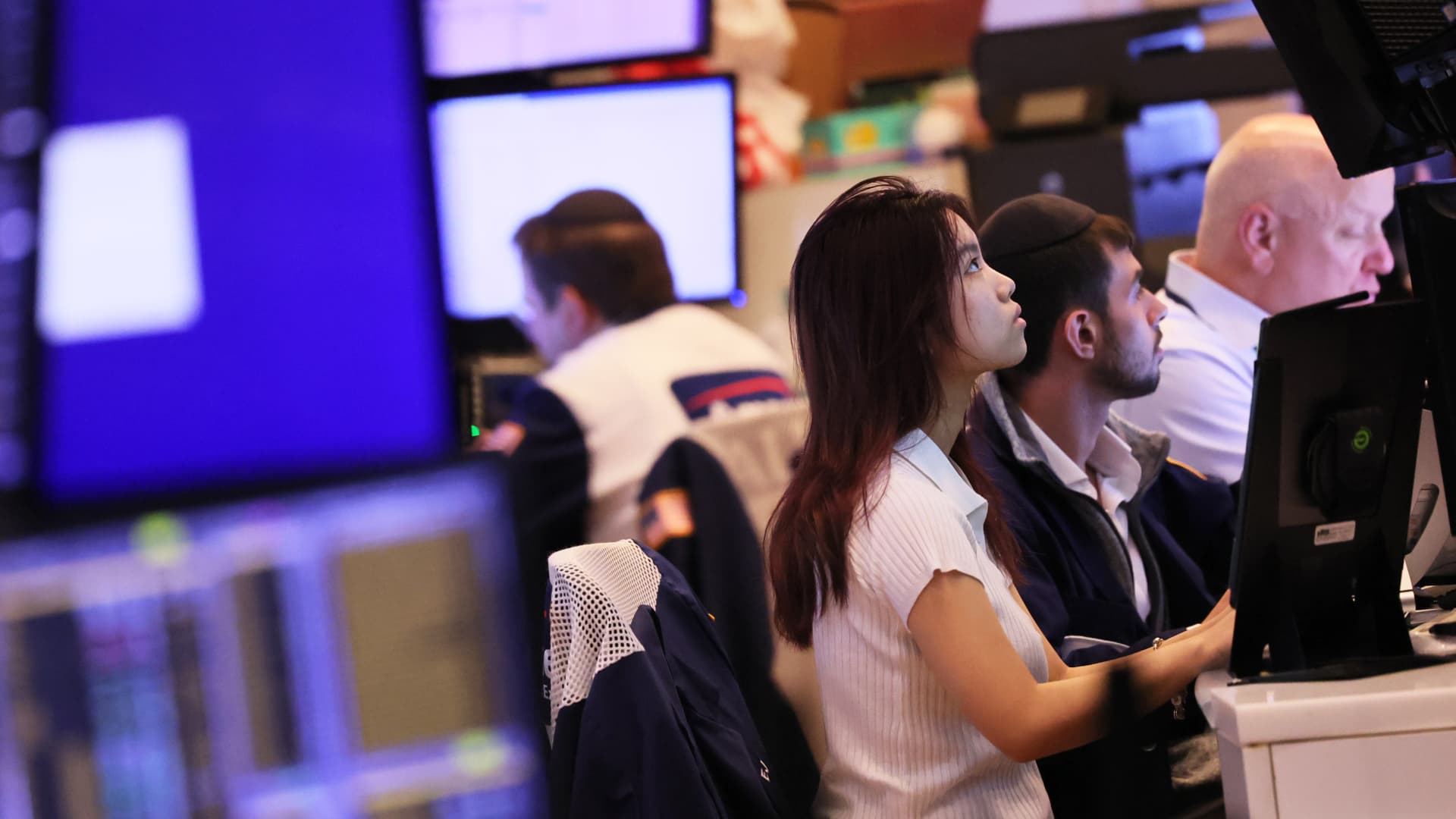Stocks are looking to maintain momentum in the holiday-shortened week ahead even as Wall Street contends with a seasonally weak period for markets ahead of the Federal Reserve’s September rate decision. The major averages are headed for their best week since July. The Nasdaq Composite advanced more than 3% this week as risk-on sentiment returned to Wall Street. Meanwhile, the Dow Jones Industrial Average is higher by more than 1%, while the S & P 500 is up more than 2%. Some technical indicators have investors hopeful the bullish momentum could continue in the week ahead. For example, the major indexes broke above their respective 50-day moving averages this past week — a sign of improving short-term momentum. “Investors are feeling more optimistic because we’re back in an ascent mode and upward trend,” said Sam Stovall, chief investment strategist at CFRA. He added that: “At least in the near term, I think that the U.S. equity markets could continue to climb even in the face of a relatively challenging month.” To be sure, there will be challenges as stocks attempt their climb. September is historically the worst month for markets, and investors will have to digest major inflation data ahead of the Fed’s September policy meeting. Central bank policymakers convene for a two-day meeting starting Sept. 19 and announce their interest rate decision Sept. 20. However, some market experts urged investors to stay the course. “We’ve seen some signs that the economy is slowing down a little bit, not crashing into a recession, but simply slowing down,” said Ryan Detrick, chief market strategist at Carson Group. “So, I think that’s what the market’s going to want to continue to see for the Fed to take its foot off of the gas pedal.” Watching inflation The jump in the U.S. unemployment rate had more traders betting the Fed will pause rates in its September meeting and could continue to hold steady at the November meeting. On Friday morning, the CME FedWatch tool showed markets are pricing in a 93% the Fed will hold rates in September, up from an 88% chance on Thursday. Meanwhile, chances the central bank will not raise rates in November also jumped to 65% from 58.9% the previous day. However, there is still a raft of economic reports investors will have to watch before the Fed meeting, including inflation data. The August consumer price index is set to release Sep. 13, while the producer price index for last month is expected Sept. 14. Meanwhile, the personal consumption expenditures price index, which is the Fed’s preferred inflation measure, is due out Sept. 29. “When all is said and done it will be the trajectory of inflation that will ultimately form the Fed’s rate decision — inflation remains sticky,” wrote Quincy Krosby, chief global strategist at LPL Financial. Bullish signals in historically weak month September is also considered historically the weakest month for equities. Since 1945, the S & P 500 notched its worst average return in September, making it the only month the broader index declined more frequently in price than it rose, according to a note from CFRA. (To be sure, CFRA said there have been years when the broader index bucked the trend, such as in 2010 and 1954). In fact, some factors including higher yields and weak data out of China that weighed on markets in August — also a seasonally weak month — could continue to pressure stocks in September. However, there are some signs that the recent momentum in equities could continue — at least in the near term. This week, HSBC’s Max Kettner said a significant move to neutral in the investment bank’s short-term sentiment indicator could mean opportunity ahead for U.S. stocks and risk assets . Meanwhile, Bank of America strategist Savita Subramanian said the bottom is likely in for earnings . “I think we probably continue to go up until there’s some contrary data comes out that makes markets move down,” said John Luke Tyner, portfolio manager at Aptus Capital Advisors. Eventually, Carson Group’s Detrick thinks the S & P 500 could eventually advance to new highs this year after they make it through some seasonal weakness. “It’s normal to see volatility in the month of August and September, and maybe even some scary headlines. Investors need to kind of brace for those types of things, again, knowing that if the economy stays strong, like we think it will, there will be better times ahead,” Detrick said. Next week will be a holiday-shortened week. Markets will be closed Monday for the Labor Day holiday. However, Wall Street will keep an eye on July factory orders data set to come out Tuesday. Economists polled by FactSet are anticipating a decline of 2.7%, lower than the 2.3% rise in the prior month. PMI reports are also on deck. Week ahead calendar All times ET. Monday Sept. 4 Labor Day holiday Tuesday Sept. 5 10 a.m. Durable Orders final (July) 10 a.m. Factory Orders (July) Wednesday Sept. 6 8:30 a.m. Trade Balance (August) 9:45 a.m. PMI Composite final (August) 9:45 a.m. PMI Services final (August) Thursday Sept. 7 8:30 a.m. Continuing Jobless Claims (8/26) 8:30 a.m. Initial Claims (9/2) 8:30 a.m. Unit Labor Costs final (Q2) 8:30 a.m. Productivity final (Q2) Earnings: Fastenal Friday Sept. 8 10 a.m. Wholesale Inventories final (July) 3 p.m. Consumer Credit (July) Earnings: Kroger
This website uses cookies so that we can provide you with the best user experience possible. Cookie information is stored in your browser and performs functions such as recognising you when you return to our website and helping our team to understand which sections of the website you find most interesting and useful.





















Discussion about this post